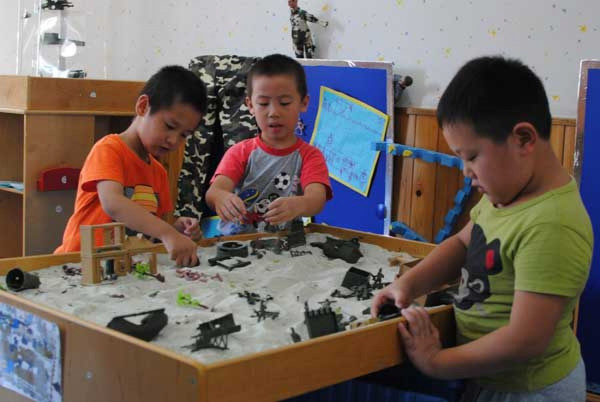Boys Will Be Boys: Chinese School Goes For Very, Very Traditional Education

One school in China is trying to address an apparent “crisis” plaguing elementary classrooms, where young boys seem to have become more timid than their female counterparts. The school in Shanghai is the first to employ “gender education,” as early as five years old, to help develop traditional concepts of masculinity in boys and femininity in girls.
According to a report by the state-run China Daily, the Haoertong Kindergarten in Shanghai was noticing that boys had recently become what the school considered to be less masculine. The school’s gender education program was introduced after some teachers noticed what they called a “boy crisis” where boys were becoming “physically weaker and emotionally more vulnerable than girls,” worrying both teachers and parents.
“We would like to introduce some the best traits in men valued by Chinese tradition, such as bravery, the courage to overcome difficulties and the sense of responsibility,” principal Xu Hui told the paper. “For girls, we hope to cultivate their gentleness, carefulness and grace,” Xu continued. The solution, the school said, was to introduce a program which includes two gender-specific classrooms, where students partake in traditionally girl- or boy-oriented activities.
Twice a week, boys and girls spend 30 minutes developing their masculine and feminine traits when they are separated into their individual classrooms. In the boy’s classroom, children play with pint-size versions of sports equipment, like baseballs, golf clubs, race cars and bows and arrows. The classroom also includes a small sandbox where the boys are encouraged to play with army men and fake weaponry and play-fight their classmates. After 30 minutes of playtime, one of the school’s two male teachers helps them practice a few kung fu moves before going on with their day. “When boys play with boys, they play more wildly and freely,” teacher Ni Jieji said of his literal boys' club.
The girls' club also takes a very traditional gender role position. The classroom, done up in pink, features a corner where young girls can learn to make flower bouquets, a small fake kitchen where they can learn to cook with plastic food items, and a dress- up wardrobe filled with flouncy skirts -- and even a catwalk.
Such traditional gender stereotypes have naturally sparked some criticism; many say restricting the children to such stereotyped interests is limiting their development and discovery. But the school’s former principal, Zhu Jun, who was in charge when the program was introduced in 2011, says the separate playrooms were designed to the specifications of the children themselves. “Some questioned why boys could not do the activities of girls, or why girls are confined to the stereotypical professions,” Zhu said. “We actually fully consulted the children’s wishes and designed the two clubs according to their choices.”
Under the new leadership of principal Xu Hui, the school is thinking of making some changes to the program that would remove the separation between the two sides, allowing for a little more fluid play between the two kinds of activities. “We emphasized the gender characteristics recognized by Chinese tradition, but ultimately we need to allow the children to choose freely what kind of person they would like to grow into,” Xu said.
© Copyright IBTimes 2024. All rights reserved.






















